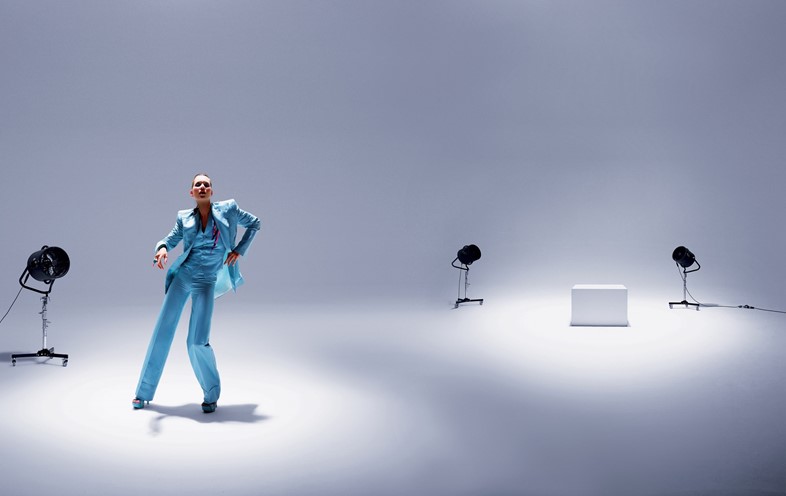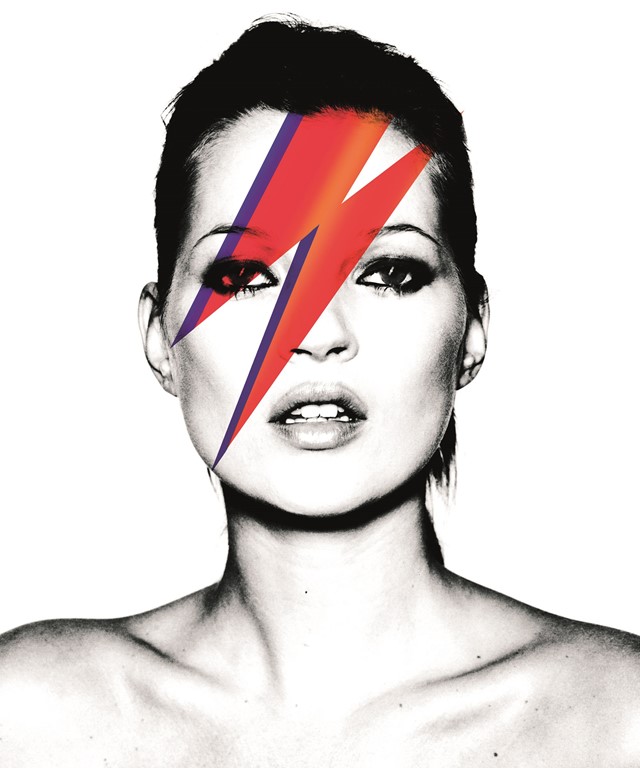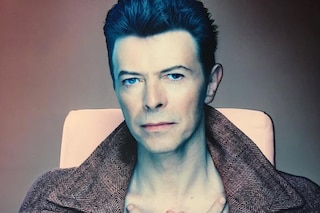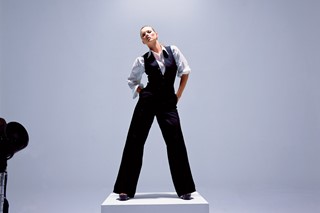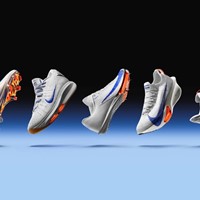On set with the musician and the story behind that now-infamous Kate Moss lightning bolt image – the photographer discusses his influence
From Hedi Slimane, who recently penned a personal, heartfelt tribute, to Lady Gaga, who performed a medley of his music at the Grammys, leading names in fashion and music have been vocal about the ways in which David Bowie has influenced their work. Last week at the Victoria and Albert Museum, photographer Nick Knight, writer Tim Blanks, GQ editor Dylan Jones and David Bowie Is... exhibition curator Victoria Broackes became the latest to put his legacy under the lens, coming together for a panel that explored his influence on fashion, culture and masculinity. Organised as part of SHOWstudio’s David Bowie: Oooh Fashion! project, for which Knight is unearthing unseen footage of the late musician from his own archive, footage the discussion will go live on SHOWstudio today. To mark the project, Knight revisits his own memories of the late icon, including shooting his 1993 Black Tie White Noise album cover and styling Kate Moss in his clothes.
“It all started for me was when I was a teenager. Top of the Pops was the only time you could see music in Britain in the 1970s, so on Thursday night at 7.20pm you’d all sit around the television – it never felt like it was cool, that was just the only focus of British youth culture. Out of the weirdness of glam rock came this funny elfin figure, David Bowie. It was an odd time for masculinity; it was different to anything else that had been proposed before: it was delicate, feminine. Men were suddenly becoming very interesting and very visible and Bowie was probably the best looking and the best at it. He stood out and continued to stand out, all the way through the 1970s from incarnation to incarnation.
I remember the whole Ziggy Stardust thing, The Man Who Fell to Earth, Ashes to Ashes. That’s what I grew up with. I was never a direct clone of him and I don't think you could be in those days, because clothes just weren't accessible. I was living in provincial Cambridgeshire miles away from anywhere – you were lucky if your trousers were flared. Everything was customised, it was all very DIY, which of course is why you see punk happening. I remember being at school and wearing make-up to rile people up. The fact I could put make-up on – which was a very feminine thing to do in 1973 or 1974 – and get such a strong reaction…it became a way of expressing myself because I didn’t feel like I fitted in.
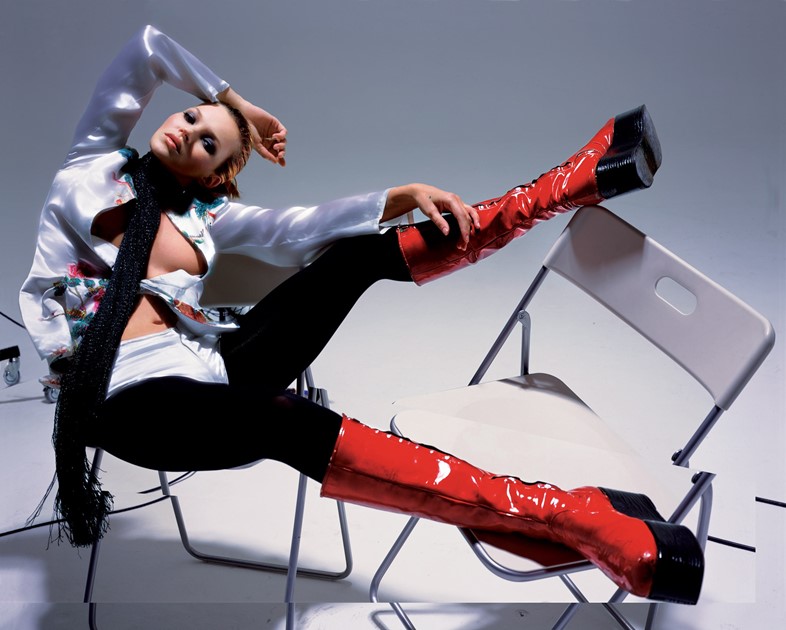
I first met Bowie in the early 90s. He phoned me up and asked if I would do an album cover for him. At the time I had Craig McDean working for me, and Craig looked more like Bowie than Bowie did. He was about to stop being my assistant and go off and do his own thing, so I asked him as a sort of farewell treat if he’d like to come back and do a one day shoot with Bowie. It was funny because he got quite shy, and it turned out that pretty much everyone on that set was a huge Bowie fan, like Melanie Ward who did the styling. Bowie had Coco Schwab there who was his advisor, but she was quite strict on what she would let him do. She went shopping at one point, so we went ‘Ooh David how about taking your shirt off and just putting an overcoat on?’ and we had to work it that way.
He was very lovely, very clever and incredibly well informed. The topics we talked about… Dadaism was the level of the conversation. He was friendly to everybody, he was equally as charming to the studio assistant who came in to give us a new battery for the camera as he was to me or everybody else on set. He was super delicate in his gestures, very refined in how he moved, very conscious of everything around him, very witty, very fast; all the sort of things you hoped he would be.
Then in 2003, somehow Vogue had acquired some of his old wardrobe with his blessing so we wanted to do a shoot on Kate; I was delighted to do it. She was the exact same size as he was, she fitted his clothes really well – more than just in terms of size. Some models would just not look right in them, you can’t imagine putting some of the clothes on Linda Evangelista or Nadja Auermann or whoever would have been on the scene at the time. So Kate had both the attitude and the physical side of it which made her perfect for it and she loved it, she was incredibly good. Her talent is bringing out the narrative that’s in the piece of clothing – that’s why she’s such a good model. She can put on that pale blue suit and suddenly bring out the same narrative that Bowie would have brought out when he wore it.
“Bowie had Coco Schwab (on set) who was his advisor, but she was quite strict on what she would let him do. She went shopping at one point, so we went ‘Ooh David how about taking your shirt off?’” – Nick Knight
The idea for the cover came because we wanted to do a shot that looked like his record cover, to recast her into that role with that symbol. It’s almost a piece of clothing, that lightning bolt. Weirdly the image became quite widely used when he died, it had a relevance to it. It’s funny – I lived through the first time Bowie was around and then the second and third and fourth and fifth. Generations now are picking up on him again and realising that he’s still got something to say to them. A lot of those rock stars from the 70s have nothing relevant to say anymore but Bowie’s message is still incredibly applicable. The way he used to do his lyrics was incredibly interesting, he would write them out and then cut them up and reassemble them abstractly. That’s also the way someone like Kanye works, there are different things that he did that are picked up by musicians around now and a whole different range of people.
I think the most important thing he taught us is about people’s sexuality, that we are sexual beings, we are not heterosexual, homosexual, bisexual. I think that should free us up from a lot. But a bit like the fashion industry, those things are still in flux – that might be true for a bunch of eighteen-year-olds, it’s not true if you are working for a law firm in the city or in the army, your sexuality is very defined in those circumstances. But I think overall society is changing and we’re realising that sexuality isn’t something which is predetermined and we that are definitely this or that. Different things turn us on at different times, which seems to be a much more sane way of looking at sexuality. That's kind of what Bowie first started, and that was why he spoke to me back in 1974.”
Head to SHOWstudio to see Nick Knight, Tim Blanks, Dylan Jones, Victoria Broackes and Lou Stoppard discuss Bowie’s legacy, as well as unreleased footage of Bowie on set of his album shoot
